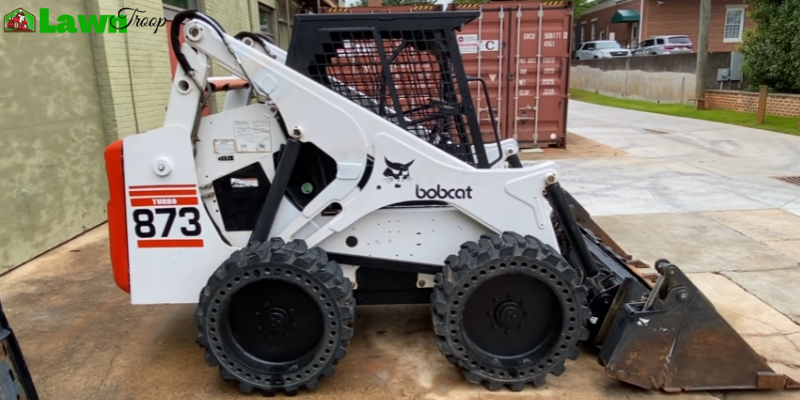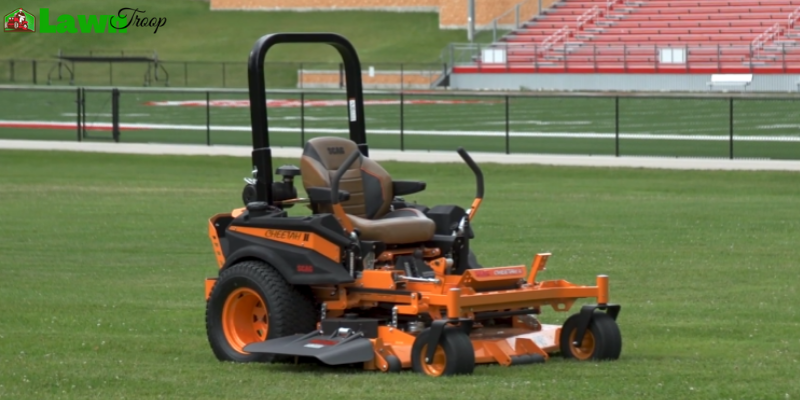Zero Turn Hydrostatic Transmission Problems and Solutions
There are many zero-turn mowers you will see in the market. And there are some common problems that you will see in these mowers.
What are the most common problems of zero-turn mowers? Are these problems of zero-turn mowers easy to solve or do you need to take them to a servicing center?
These mowers have one common issue regarding transmission. It is the hydrostatic transmission problem. Some other common problems are- jamming the blades, not starting, power issues or engine problems, etc.
Fortunately, most of the problems can be solved at home. In case of a serious engine problem or a faulty part, you need to take it to an expert.
What Is A Zero-Turn Hydrostatic Transmission?
‘Hydro’ means ‘fluid, “static’ means ‘motion,’ and ‘drive’ – presumed – means how the wheels are propelled. As a result, hydrostatic drive, such as an automatic transmission, would be referred to as ‘fluid drive.’
When used to a lawnmower or a piece of big machinery, though, it implies a very infinite, particular wheel/track control of that motor; each one is individually controlled by the quantity of fluid provided to it, dictating the speed of THAT wheel/track.
Thus, a hydrostatic drive mower has either one “pilot control” that changes the supply of hydraulic fluid to the drive engines, or two handles – one per side – that regulate the fluid supplied to every wheel or track.
Most contemporary tractors and zero-turn mowers employ hydrostatic transmissions to transfer energy from the motor to hydraulic pumps, that use liquid pressure to drive the wheels. There are no gears required, and speed changes are seamless and quick.
Things may go awry with any transmission. Reading your Operator’s Manual is the first step. We can only provide broad suggestions because there are multiple kinds of hydrostatic transmissions. Your mower operator’s handbook will contain information particular to your make and model, as well as for instructions on where to find filters and other items that may need to be serviced on your tractor or lawn equipment.
Zero-Turn Hydrostatic Transmission Problems
Now you know what is a zero-turn hydrostatic transmission is. I will share what issues can happen here.
Hydrostatic transmissions have mechanical components like a differential and a driving axle, as well as rubber or metal tubes through which the liquid is forced.
Tractor hydrostatic transmission difficulties can be caused by the malfunction of any mechanical element, a broken hose, or a clogged filter.
The most typical problem, though, will be the oil itself. A part on oil viscosity may be found in the transmission part of your operator’s manual.
Here are a few simple troubleshooting strategies for quickly resolving your mower’s hydrostatic transmission issue!
Purge The Hydraulic Drive System:
Cavitation, or the presence of air in the system, can cause zero-turn hydrostatic transmission issues. Whenever the pump is filled with air rather than oil, it is unable to provide the pressure required for power generation. In zero-turn mower gearboxes, this is rather typical. It’s a smart option to purge the gearbox before using your mower after it has been preserved for the winter. If your motor is weak or slow, this is an excellent starting step.
If the mower has a transmission that has to be maintained, make sure you purge it once it’s been serviced and before using it.
- Place the mower on jack stands at the back, press the parking brake, and park it on level ground.
- Check that the oil reservoir is correctly filled according to the manufacturer’s specifications.
- Turn off the transmission (go through your user manual to see how it is done).
- Start the engine while seated in the operator’s seat.
- Move the throttle control to the slow setting while the engine is running. Disconnect the clutch/brake pedal and set the motion control levers to neutral (N).
- Thrust the motion control levers forward and keep them there for five seconds.
- Pull the motion control levers back and keep them there for five seconds.
- The above 2 steps should be repeated three times. This clears the hydraulic transmission system of any air.
- Place the control levers in the neutral position (N). Engage the parking brake and turn off the engine.
- Check the oil level and top it up if needed.
- Activate the transmitter.
- Start the engine and deactivate the brake after removing the jack stands.
- Roll roughly 5 feet by moving the control levers forward. Then gently reverse for a distance of nearly the same. Restore the levers to their neutral positions and repeat the process three times more.
You’ve completed the task! Your system has been cleared of air, and your zero-turn mower is ready to go.
System checking:
If you’ve cleaned your system but still have an issue, it’s time to try some basic troubleshooting. Begin by doing a thorough visual inspection of the hydraulic system.
Examine the oil level and, if necessary, add more. Examine the hoses and connectors for any evidence of damage or leakage. Look for damage on the pump cooling fins using a cloth, brush, or compressed air.
Changing the hydraulics and steering fluid:
Fluids that are old or abused are frequently the cause of sluggish functioning. And it might be important to change the hydraulic and steering fluids if there is no evidence of leakage or damage.
Talk to an expert mechanic:
If you can’t find the problem or you have no previous experience of doing this sort of work, it is better to talk to an expert. Because, if you do something wrong without knowing while trying to fix the problem, it will cost you even more.
What Are Some Other Common Problems?
Despite mechanical issues with hydrostatic transmissions being uncommon, they do happen. When the oil that drives the hydraulic pump leaks, the internal pressure drops, making shifting difficult.
You may notice that the lawn tractor isn’t as powerful as it once was, or that it may not respond to your moving.
It’s also conceivable that the transmission control arm is out of alignment, impairing the machine’s shifting ability. It’s time to access and change the adjustment bolt if the tractor’s wheels keep moving when the machine is in neutral.
You may have triggered the manual bypass lever if you don’t get a reaction when you adjust the shift control arm. The manual bypass lever, which helps pull or push the mower, prevents the tractor from reacting when you press the control arm till you remove the lever.
Benefits Of Hydrostatic Transmissions
I have told you many things about the problems of a hydrostatic transmission. Now, let me tell you some of the benefits of using it.
Hydrostatic transmissions outperform other kinds of gearboxes whenever it comes to shifting and controlling the mower.
As there are no gears to grind on a hydrostatic type, there will never be any grinding or jammed gears. You also don’t have to halt the mower to change gears to slow or accelerate the machine.
To alter the modification while you’re still moving, simply utilize the hydrostatic controls. Instead of forcing you to utilize a clutch/brake pedal, several producers of hydrostatic mowers position hand controls for moving the mower near the steering wheel for convenience of operation.
Conclusion
Hydrostatic transmissions are beneficial for many users for convenience and easy usage. Although some problems may occur in hydrostatic transmission, those problems are quite rare. And most importantly, you can fix them quite easily. However, if you face any problem, always contact an expert.
Related Posts:


